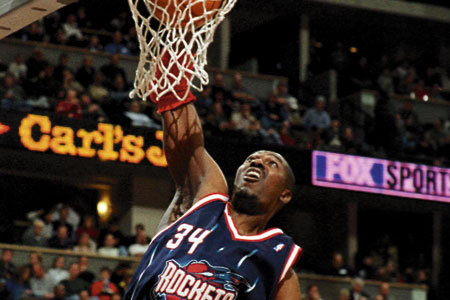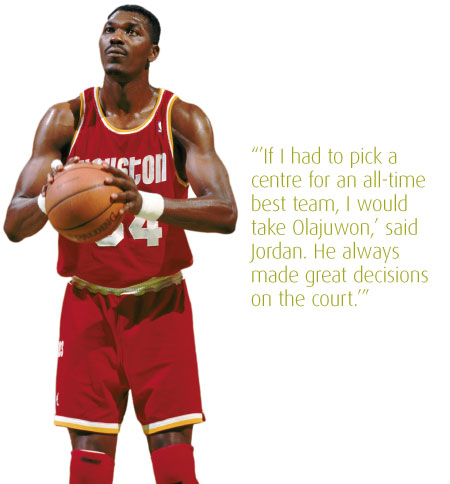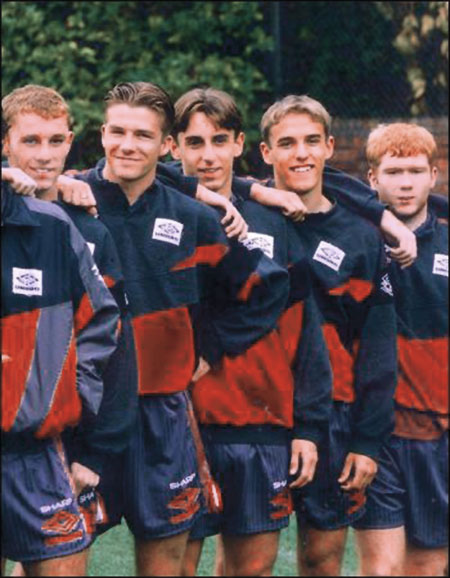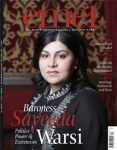
Sports - Basketball - Hakeem the Dream
Issue 79 April 2011
Over a glittering 18-year career, Hakeem Olajuwon led the Houston Rockets to two NBA Championships, and is the only player to be named NBA MVP, Defensive Player of the Year and Finals MVP in the same season. The basketball legend talks to Ali Khimji about signature moves, Michael Jordan and Ramadan.
So, where did it all begin for this basketball legend? Unlike many of his predecessors, Hakeem only started playing at the age of 17, “During my senior year of high school, the basketball coach invited me along to one of the training sessions because of my height. I picked up the game pretty quickly and after three months, I was invited to represent Nigeria at a tournament in Angola.” Hakeem attracted a great deal of attention at the tournament, with one of the coaches advising him to go to America and seek a basketball career in the NBA. Eight months later, he found himself enrolled at the University of Houston.
At college, Hakeem was part of the Phi Slama Jama, a nickname for the school’s beloved basketball team. They made it to two consecutive finals (1983, 1984) and Hakeem continued to impress his spectators, receiving the Player of the Year award in 1983. In the 1984 NBA Draft, the Houston Rockets won the coin toss and selected Hakeem as their first pick.
It was also around this time that Hakeem began to take more of an interest in Islam, “When I was growing up in Nigeria, my parents were devout Muslims. Every Friday, our school would close early and the radio stations would play the adhan; the atmosphere in the local community was just beautiful. When I got to America, I really missed that feeling. I discovered there was a mosque five minutes from the stadium we played in, so I paid a visit and as soon as I heard the adhan, the childhood memories came flooding back. I felt a new passion for my faith, and decided to start studying Islam in-depth.”
Having joined the Houston Rockets, Hakeem teamed up with Ralph Samson to form the original NBA ‘Twin Towers’ duo, and missed out on winning ‘Rookie of the Year’ to another upcoming player, Michael Jordan. In his second season, the Houston Rockets made it to the Western Conference Finals, where they beat the defending champions, the LA Lakers, four games to one. After the game, the Lakers coach, Pat Riley, commented on Hakeem’s performance, “We tried everything. We put four bodies on him. He’s just a great player.”
In the 1987-88 season, Ralph Sampson was traded to the Golden State Warriors, so Hakeem stepped up to be the main player for the Rockets. Although the next few seasons weren’t the best in the Houston Rockets’ history, Hakeem went from strength to strength. He recorded a quadruple-double in the 1989-90 season and became the third player in NBA history to hold the achievement.
After much speculation about being traded before the 1992-93 season, the Houston Rockets started the season with a new coach, Rudy Tomjanovich. “Rudy was probably the best coach I had,” says Hakeem. “The others helped me to become tougher and develop a strong work ethic, but Rudy had great confidence in me. He gave me the freedom to be creative, and that’s definitely when I played my best game.”
Rudy’s trust in his team paid off in 1994, when the Rockets won the NBA Finals. In the seven-game series, they came up against the New York Knicks, for which Hakeem’s old college rival, Patrick Ewing played. Throughout the whole series, Hakeem dominated Ewing, outscoring him in every game. Midway through the 1994-95 season, Hakeem was joined by his Phi Slama Jama teammate, Clyde Drexler. Again, the Rockets won the 1995 NBA Finals, beating Orlando Magic in four games, who were led by a young Shaquille O’Neal.
Quick to acknowledge the talent of his opponents, he reiterates that the games were definitely challenging, “Shaquille O’Neal, Patrick Ewing and David Robinson were the toughest players that I came up against. But we had some memorable match-ups over the years.”
Following the Rockets’ two-year championship run, Michael Jordan returned to basketball and the Chicago Bulls dominated the NBA in the next few seasons. In 1996, the Rockets added Charles Barkley and in 1998, Scottie Pippen, to their roster, and managed to make it to the Western Conference Final in 1997, but lost to Utah Jazz in six games.
After playing basketball in Houston for nearly 20 years, Hakeem was traded to the Toronto Raptors in 2001. “Players get traded all the time in the NBA, so I wanted to play my last season at another team to experience something different.” Hakeem retired after one season at the Raptors, closing a chapter on one of the greatest careers in the NBA.
Hakeem is reputed to be skilled as both an offensive and defensive player, bringing a great deal of mobility to the traditional centre position. He was also known for his signature move, the Dream Shake, “I incorporated elements of handball and soccer into basketball to come up with the Dream Shake. It was a set of fakes and spin moves to throw the opponent off into another direction.” One standout use of the move came in a game against the San Antonio Spurs in 1995. With David Robinson guarding him, Olajuwon crossed over from his right hand to the left, drove to the basket and faked a layup. Robinson kept up with Hakeem, and didn’t fall for the fake. Hakeem spun counter-clockwise and faked a jump shot. Robinson took the bait, and jumped to block the shot. Hakeem was then able to perform an up-and-under move and score an easy basket.
Hakeem believes that his faith played a great role in sustaining his sports career, “Islam helps you to become more disciplined and adds structure to your life. When you find that you have talent in a field, it becomes your obligation to develop it.” Interestingly, Hakeem’s performance actually improved during the month of Ramadan. “I was able to focus a lot better; spiritually, mentally and physically. Without food in my stomach, I felt that I had more oxygen around my body. I felt light and strong, and so much sharper.”
He is also thankful to many of the Muslim fans that he had over the years, “They were all so supportive, and I could hear them cheering me on at every game. I felt like I was representing the Muslim community, and I had to perform well to make them proud.”
Hakeem’s basketball career boasts a plethora of achievements, not in the least overlooked by great players of his generation, including Michael Jordan, “If I had to pick a centre for an all-time best team, I would take Olajuwon,” said Jordan. “That leaves out Shaq, Patrick Ewing. It leaves out Wilt Chamberlain. It leaves out a lot of people. And the reason I would take Olajuwon is very simple: he is so versatile because of what he can give you from that position. It’s not just his scoring, not just his rebounding or his blocked shots. People don’t realise he was in the top seven in steals. He always made great decisions on the court. For all facets of the game, I have to give it to him.”

Greatest Sporting Moments

STRENGTH IN NUMBERS
FORMIDABLE TEAMS
Fergie’s Fledglings
To follow the Busby Babes, Sir Alex Ferguson put together a team of young players who came to prominence in the 1995-96 season. During the main time they played together, they won six titles, two FA cups and the 1999 Champions League.
Nerves of Steel
The 1978 Steelers went 14-2 in the regular season, and nine of their players entered the Hall Of Fame. Terry Bradshaw led the offense, and was MVP for the season as well as the Super Bowl, which the Steelers beat the Cowboys to win.
Baggy Greens
The Australian cricket team dominated the scene during recent years, winning the 1999, 2003 and 2007 World Cups, and whitewashing England 5-0 in the 2006 Ashes.
Bookmark this |
|
Add to DIGG |
|
Add to del.icio.us |
|
Stumble this |
|
Share on Facebook |
|
Share this |
|
Send to a Friend |
|
Link to this |
|
Printer Friendly |
|
Print in plain text |
|


Comments
0 Comments